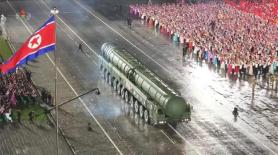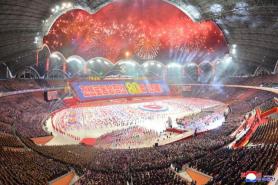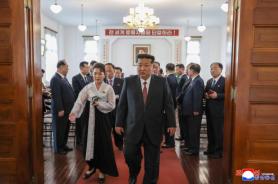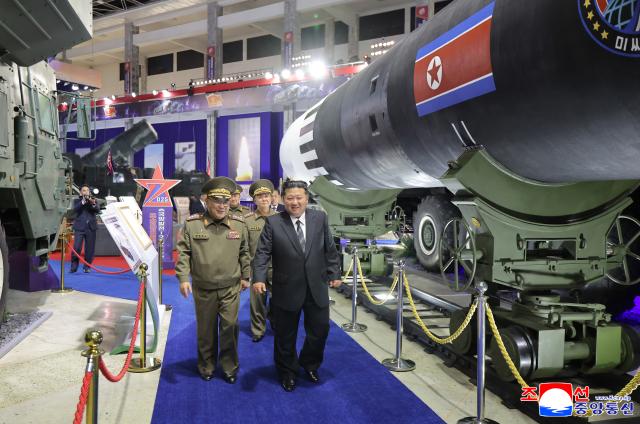
The Oct. 10 parade, marking the 80th anniversary of the founding of the Workers' Party of Korea, showcased North Korea's latest strategic weapons, including new hypersonic and cruise missiles. Senior officials from China, Russia, and Vietnam attended as VIPs, highlighting Pyongyang's bid to demonstrate solidarity within the emerging "neo-Cold War" axis.
The Hwasong-20 is believed to be an upgraded solid-fuel ICBM featuring a high-thrust engine and a carbon-fiber composite motor casing. North Korea claims the new engine can generate up to 1,971 kilonewtons of thrust—roughly enough to lift 200 tons.
Unlike traditional solid-fuel engines that rely on heavy metal casings, the use of a carbon-fiber composite shell reduces weight, allows for larger propellant capacity, and boosts thrust efficiency—critical advantages for long-range missile performance.
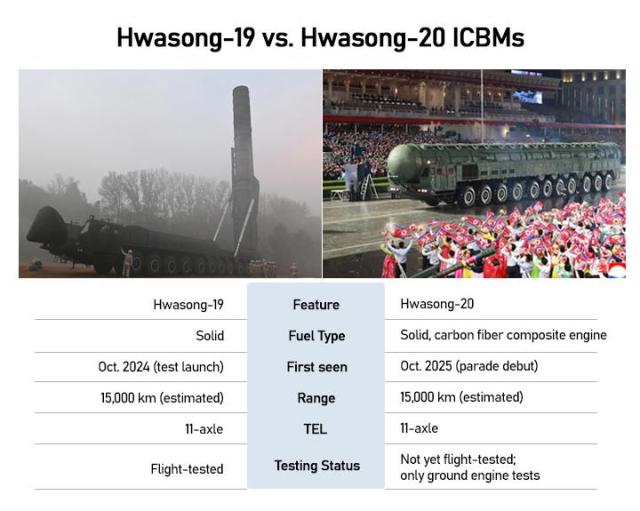
The 11-axle transporter erector launcher (TEL) appears unchanged, and analysts estimate the Hwasong-20 could have a theoretical range of up to 15,000 kilometers, enough to strike the U.S. mainland.
"Overall, the Hwasong-20 looks almost identical to the Hwasong-19, using the same TEL," said Shin Seung-ki, research fellow at the Korea Institute for Defense Analyses (KIDA). "The missile's nose appears slightly rounder, which may allow it to carry more re-entry vehicles—perhaps six to eight compared with four or five on the Hwasong-19."
Shin added that Russian technical support or materials may have contributed to the upgrade, citing the deepening military cooperation between Pyongyang and Moscow.
Despite the apparent sophistication, experts remain cautious about the missile's actual capabilities. The Hwasong-20 has so far undergone only ground testing and has not yet been flight-tested, leaving its real-world performance unproven.
South Korea's Unification Ministry noted that while Kim Jong-un avoided direct mention of the U.S. or South Korea in his speech, the display itself carried a clear strategic signal.
"From North Korea's perspective, unveiling this type of strategic weapon itself carries a message to South Korea and the U.S.," ministry spokesperson Koo Byung-sam said Monday in Seoul.
Analysts see the parade as Pyongyang's latest effort to position itself as a de facto nuclear power on par with Russia and China.
"North Korea's message is clear," said Yang Uk, research fellow at the Asan Institute for Policy Studies. "Pyongyang is signaling that it can strike the U.S., that it sees itself standing shoulder to shoulder with Russia and China, and that no one should expect it to give up its nuclear weapons."
Copyright ⓒ Aju Press All rights reserved.


